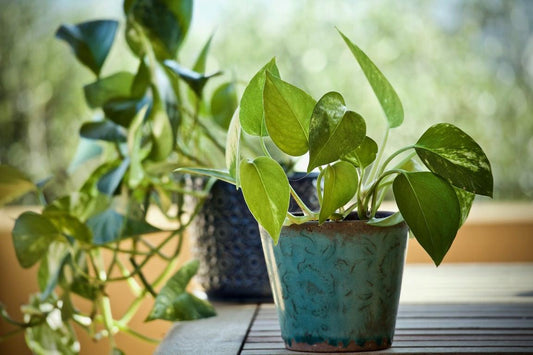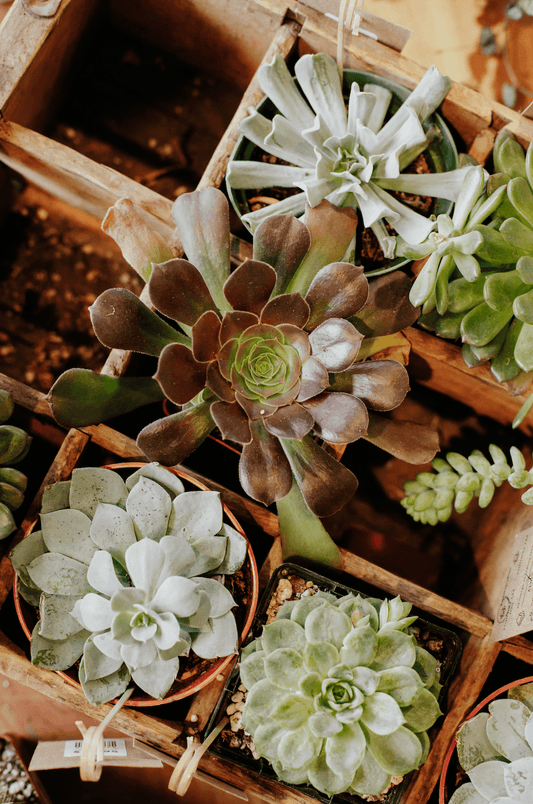SCHLUMBERGERA
How to Care for the SCHLUMBERGERA Plant
Overview
The Schlumbergera plant, also known as the Christmas or Spring cactus, is a popular houseplant that is native to the tropical regions of Brazil. It is a member of the cactus family, and like other cacti, it has adapted to survive in arid conditions by storing water in its leaves. Schlumbergera plants are typically small and compact, with flattened stem segments that are covered in soft, spiky hairs. During the winter months, these plants produce beautiful, colorful flowers that come in shades of red, pink, white, and yellow. The Schlumbergera plant is relatively easy to care for and can tolerate low light and infrequent watering, making it an excellent choice for indoor gardening. With proper care, a Schlumbergera plant can live for several years and produce beautiful blooms each winter.


Profile
Schlumbergera plants, also known as Christmas or Spring cacti, are relatively low-maintenance plants that are easy to care for. They prefer bright, indirect light and should be watered when the soil is dry to the touch. Overwatering can cause the roots to rot, so it's important to allow the soil to dry out between watering.
Unlike many cacti, Schlumbergera plants do not have spines or thorns and are safe to keep around pets and children. However, they may be toxic if ingested, so it's still important to keep them out of reach.
Schlumbergera plants do not require frequent pruning, but you may need to remove any dead or damaged leaves. To do this, use sharp scissors or pruning shears to cut the leaf off at the base of the plant. Be careful not to damage the healthy leaves or the stem.
Propagation of Schlumbergera plants is relatively easy. Wait until the parent plant produces pups or offsets, which are small plants that grow from the base of the parent plant. Once the pups are a few inches tall, gently separate them from the parent plant using a sharp knife or scissors. Allow the cut edges to dry for a day or two, then plant the pups in a well-draining potting mix. Water sparingly until the plants are established. It's important to note that Schlumbergera plants are slow-growing and may take several years to reach maturity.



Bright Light
Schlumbergera plants prefer bright, indirect light and are typically happiest when placed near a window that receives bright, filtered light for several hours a day. Direct sunlight can scorch the leaves, so it's best to avoid placing them in direct sunlight. During the fall and winter months, it's important to provide Schlumbergera plants with at least 12 to 14 hours of darkness each day in order to encourage blooming. This can be accomplished by placing the plant in a room that is completely dark for 12 to 14 hours each night, or by covering the plant with a dark cloth or paper bag.
If you notice your Schlumbergera plant becoming leggy or stretching towards the light, it may not be receiving enough light. Move the plant to a brighter location or provide it with additional light sources, such as fluorescent lights.
Overall, providing adequate and appropriate light is crucial to the health and blooming of Schlumbergera plants. By following these guidelines, you can ensure that your plant thrives and produces beautiful blooms.

Occasional
Schlumbergera plants have specific water requirements in order to thrive. These plants prefer to be kept on the drier side, so it's important not to overwater them. When watering Schlumbergera plants, it's important to use water that is free of chemicals such as chlorine and fluoride. Rainwater or filtered water are good options. Water the plant thoroughly, allowing the excess water to drain out of the pot. Do not allow the plant to sit in standing water, as this can lead to root rot.
Allow the soil to dry out 85% between watering, but do not let it become bone-dry. If you're unsure whether the plant needs water, stick your finger into the soil up to the second knuckle. If the soil feels dry at that depth, it's time to water. During the fall and winter months, when Schlumbergera plants are in their blooming period, it's important to be even more cautious with watering. Too much water during this time can cause the plant to drop its buds. Water the plant sparingly, allowing the soil to dry out slightly between watering.

Intermediate

Pet friendly
FREQUENTLY ASKED QUESTIONS (FAQs)
on SCHLUMBERGERA
How can I make my Schlumbergera plant bloom?
Schlumbergera plants typically bloom in the late fall or winter, but they may not flower if they are not given the right conditions. To encourage blooming, make sure your plant is getting enough bright, indirect light. Too much direct sunlight can cause the leaves to burn, so it's best to place the plant in a location with bright, filtered light. Additionally, Schlumbergera plants require a period of cooler temperatures (around 50-55°F) and shorter days to trigger blooming. You can achieve this by placing the plant in a cooler location or by covering it with a dark cloth for 12-14 hours a day for several weeks. Finally, make sure your plant is not being overwatered, as this can also inhibit blooming.



